Meaningful IEPs are sometimes the most difficult part of the special educator’s job. But they are also the most important….if we do them right. To do them right, we need to focus on creating a meaningful IEP. The IEP encapsulates so much of the student’s program as well as the relationship with the family. It should set the tone for the year, lay out the plan for the student, and demonstrate for the family what to look for in progress for their child.
5 SIGNIFICANT CHALLENGES OF MEANINGFUL IEPS
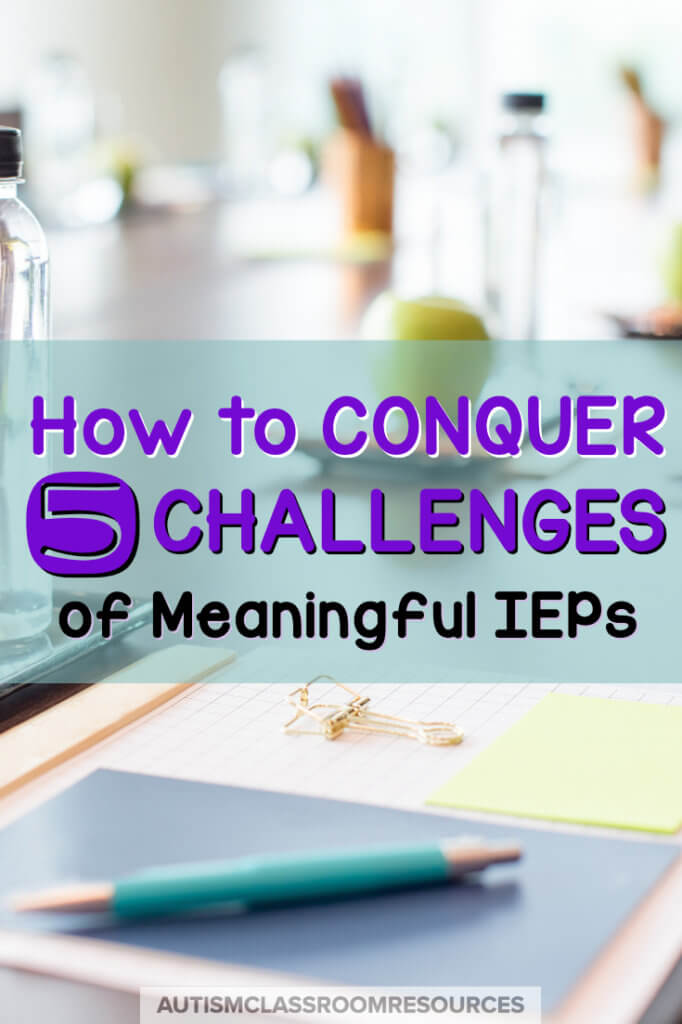
That’s a pretty big goal all by itself. But then add these characteristics and it gets even more complicated.
- It’s a collaborative document, so all different professionals and the family have to come to agreement about what it contains.
- Goals need to be challenging and expect high levels of achievement…but they also have to be attainable for the student within a year.
- The goals need to be meaningful for the student but still relate to the curriculum and the needs as outlined in the present level.
- Running a smooth IEP with all of this involved can be really tough.
- You have to be able to implement the IEP effectively to be able to show progress.
And really those are just some of the challenges. Over the years I’ve written a lot about IEPs, and I certainly have spent a lot of time writing them and sitting in IEP meetings. So I thought I would roundup my posts on different aspects of the IEP process to help you tackle those 5 challenges that IEPs present.
TACKLING 5 CHALLENGES TO MEANINGFUL IEPS
Let’s start with why the IEP is so important–why it needs to be more than a document we file away and report on each quarter. In this post, I talk about how IEPs are often the first experience families have with a school system. Whether they come to you with no expectations or they come having been told to expect problems, the way we handle that IEP meeting is going to set the tone for their relationship with us and the school.
CHALLENGE 1: COLLABORATION
Let’s face it, collaboration is HARD! First, just getting to get some consensus among a group of people is tough. But sometimes even getting everyone on the same page to start with about what the student can and can’t do can be a challenge.
Then add to that the fact that every member of the IEP team comes to the table with a different focus, and finding common ground can be especially tough.
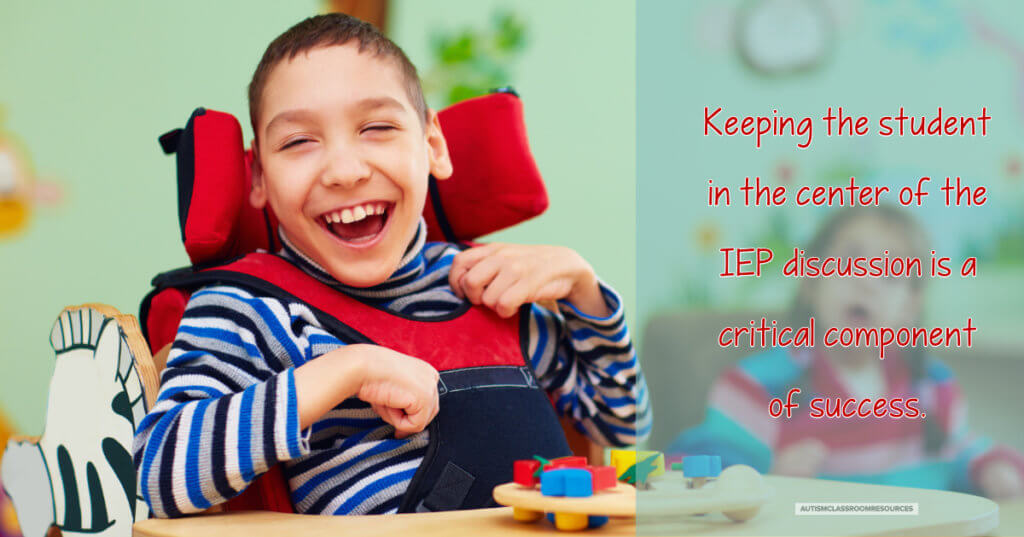
In this post I explored how to create positive IEP meetings with parents. And I’ve included a social story about collaboration as a reminder to all of us of others’ perspectives. 🙂
And in this post I wrote about the importance of keeping the child / student at the center of the discussion. Just know that if we always keep the student’s interests at the heart of the discussion, we may disagree, but we can build a better solution.
Collaboration can be tough in IEPs because every team member has a different perspective. But if we keep the student’s interest at the center of the discussion, we can find build a better solution together
CHALLENGE 2: CHALLENGING BUT ATTAINABLE GOALS
Creating Goldilocks goals (i.e., those goals that are “just right”) is a true challenge for all of us. And no one expects it to be perfect. Sometimes our goals may be too challenging and we have to amend them because the student won’t master them, based on our data. And other times, they will master them before we expect. There is no harm in calling an IEP to amend the goals for either of those reasons. It just shows that you are teaching, troubleshooting, and using the data to make decisions.
In order to have Goldilocks goals, we have to know what the student can do before we start to teach the skill. We have to have a baseline level of their skill. We need to make sure that the goals are measurable and that we have made good decisions about the criteria for mastery. Read more about making decisions about criteria for mastery in this post.
CHALLENGE 3: MEANINGFUL GOALS
In the world of increasing focus on the alignment with the general education curriculum, writing IEP goals has gotten even more tricky over the course of my career. It used to be we just wrote the individual skills the student needed. Now, we typically have to reference the state curriculum and figure out how it relates to some of our students who may have very significant delays.
WRITE ENABLING GOALS
One solution for this is to make sure that we are writing meaningful goals based on the present level, but also write enabling goals. Enabling goals are goals I call “door openers.” They are goals that open doors to learning new skills.
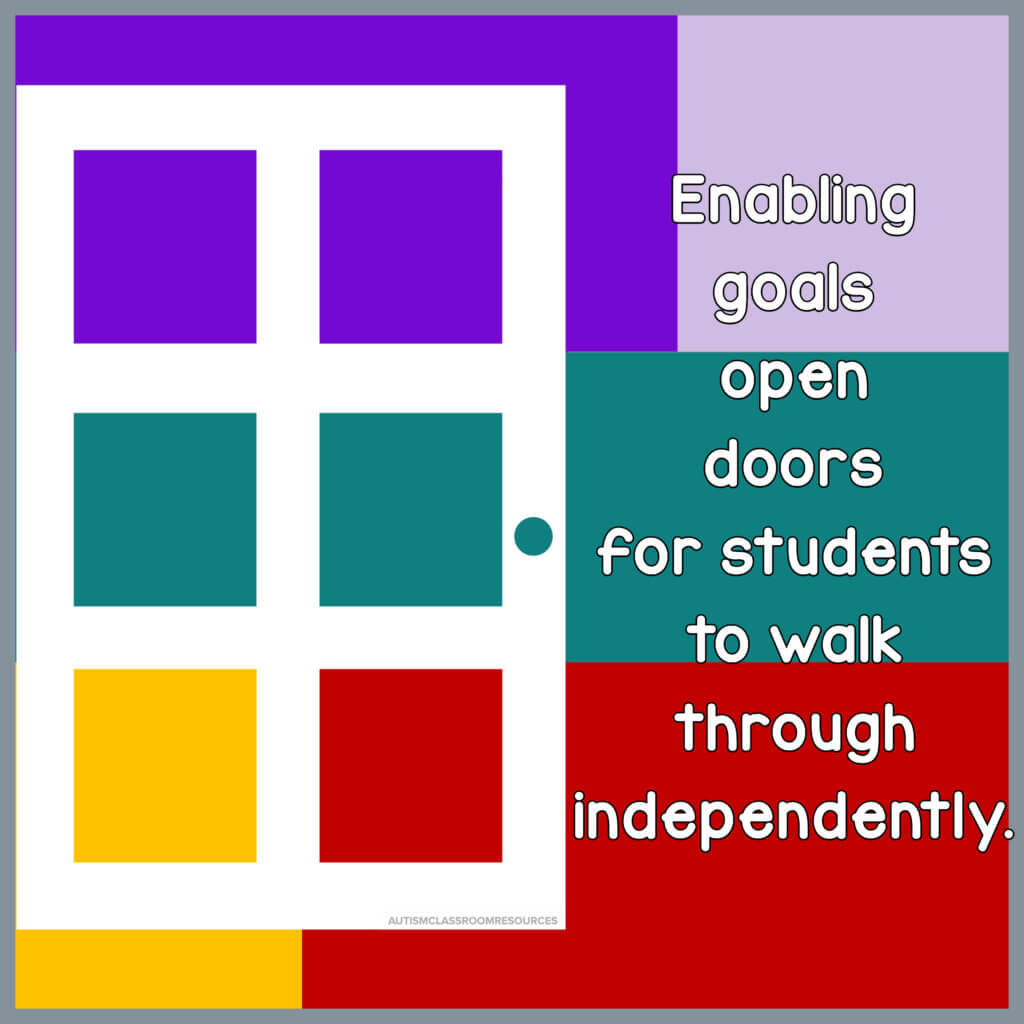
Enabling goals always ask the question, “What does the student need to do to be more independent in learning?” What helps the student be able to interact with larger groups of people in their environment? And what do they need next?
Now, obviously at times the enabling goals don’t match up perfectly to the curriculum. And we will need to write goals that are curriculum-based. But even our curriculum-based goals can have enabling components. We just have to make sure we find the goal to write from our choices that make them more independent.
Interested in learning more about how to write goals to the content standards, come join us in the Special Educator Academy where we have a whole course on just that!
So, for a high school student with limited reading skills, we might focus on increasing reading comprehension by reading a recipe. We can relate that back to a reading comprehension standard for using text in a functional manner. And we can teach a functional skill at the same time.
This post has more information about why enabling goals are useful, keep you from having to rewrite an IEP when the student changes classes, and how to write them meaningfully.
In addition, have you ever wondered why you need that general educator in the meeting? You know, besides that it’s a requirement of the process? Here are some reasons how the gen. Ed. teacher can help YOU and the student with a little preparation to make the best IEP for the student.
CHALLENGE 4: RUN A SMOOTH IEP MEETING WITH ALL OF THIS IN MIND
Yep, trying to keep up with everyone’s different perspective and input, the student’s performance, the student’s input if he is old enough and able to contribute, and the paperwork, running a the IEP meeting can feel really intimidating.
In this post I’ve shared how to prepare for the IEP so it can go as smoothly as possible.
I’ve shared some tips in this post for how to structure the meeting to help it go well.
And some interaction tips for managing the meeting that might be difficult in this post.
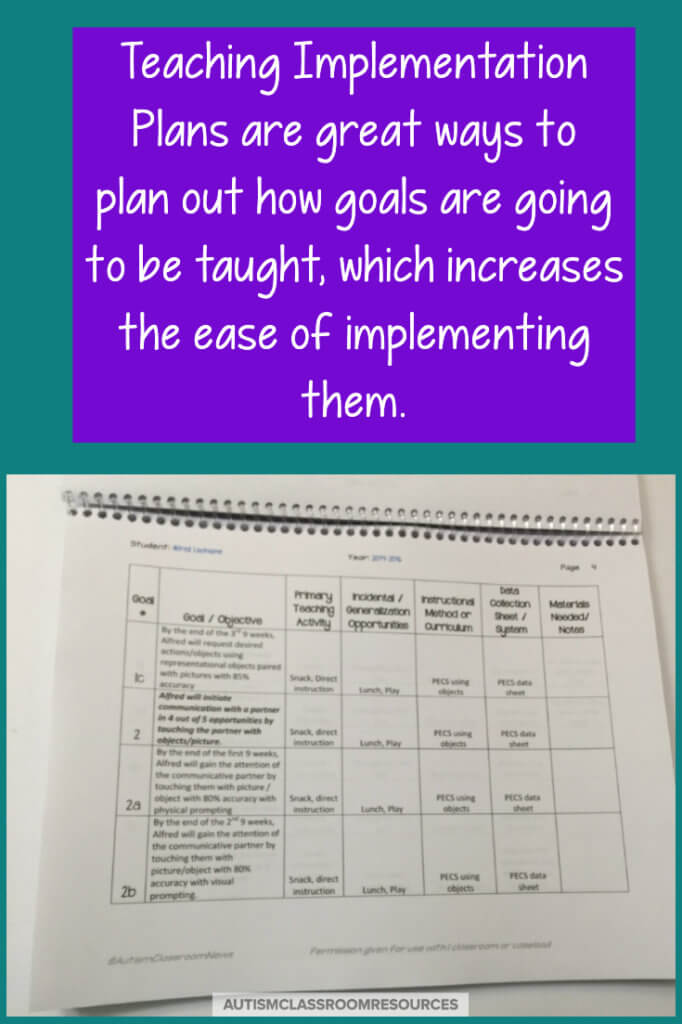
CHALLENGE 5: IMPLEMENTING THE IEP
Finally, you have to implement the IEP in a meaningful way across the student’s school day. There are some ways to help this happen more easily.
First, make sure as you write the goals that you are thinking about how you will teach the skill and how you will monitor it. There is nothing worse than looking at a goal after the IEP is finalized and thinking, “How am I going to be able to demonstrate that?”
And, over the years, the way I write goals has changed as I’ve learned more about how to be effective and as the laws have changed. But the one thing that always remains is that the goal not only has to be measurable and clear, but it has to fit the way you are teaching.
“Writing a goal that a student will master the first 5 steps of a 7-step hand washing routine and then teaching the goal with only 4 steps doesn’t make sense. You have to think about how you are going to teach the skill before or as you write the goal.”
USE THE TEACHING IMPLEMENTATION PLAN
And finally, the best way to think about and plan how to implement the IEP, I think, is to use the Teaching Implementation Plan. The TIP helps you think about where and how you are going to teach the skill, as well as how you will collect data on it. I like to use it to plan out the IEP goals, as well as to set up the classroom. That way implementing the IEP is as easy as finalizing it and putting it into practice.Looking for more information about running IEPs? Or maybe a good goal bank to pull from for ideas of meaningful goals? Or are you interested in learning more about how to use the TIP?
You can find all of that in the Special Educator Academy.
This post came from a workshop from the Special Educator’s Academy. To learn more about how to address EF issues in your classroom, come check us out. We have a two workshops dedicated to EF along with tons of other topics!


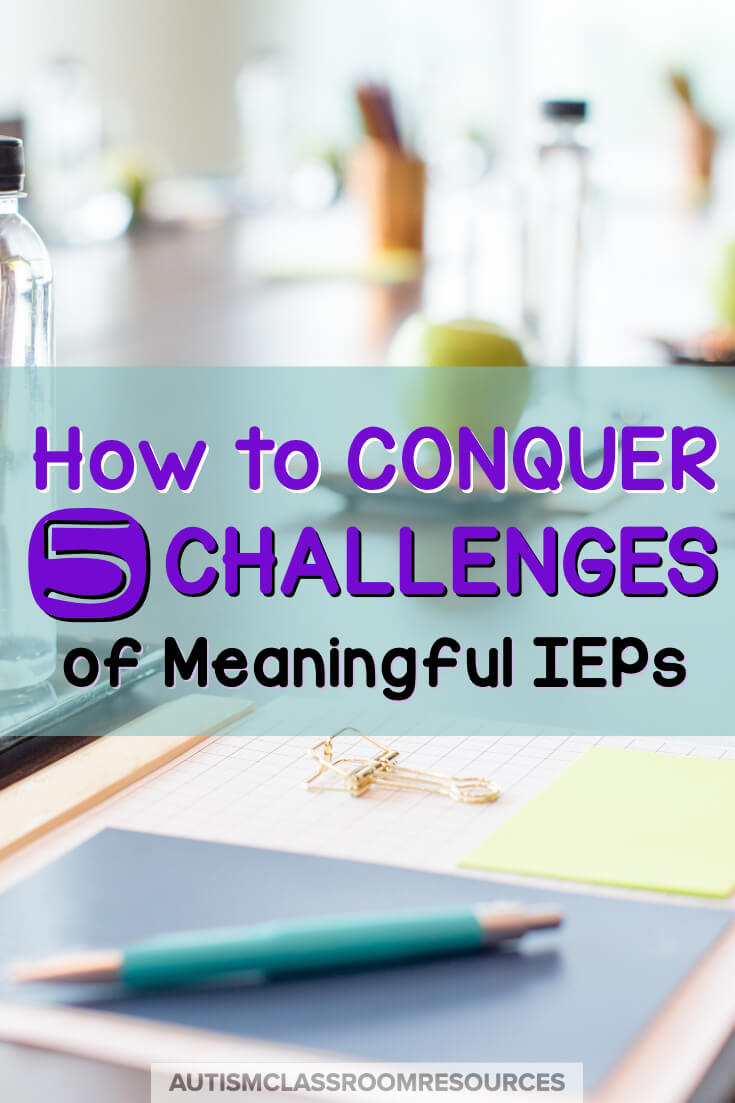


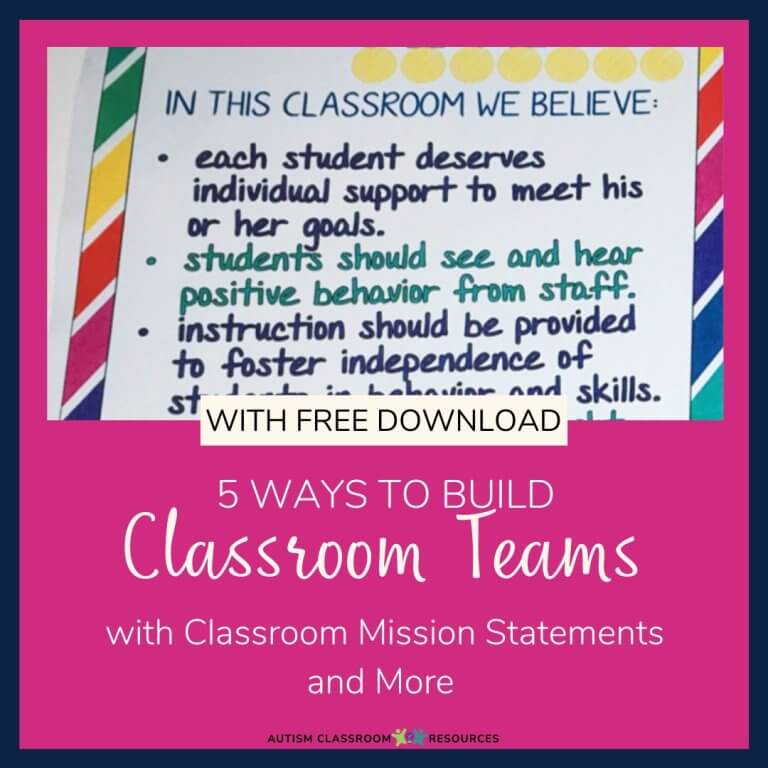
![Summer resources to help survive the end of the year in special education [picture-interactive books with summer themes]](https://autismclassroomresources.com/wp-content/uploads/2018/05/SUMMER-RESOURCES-ROUNDUP-FEATURE-8528-768x768.jpg)
